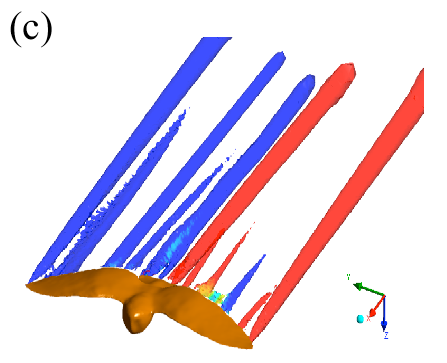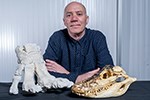How gliding barn owls could be the key to improved flight of small aircraft
New research from the RVC shows potential to reduce drag
Aeronautical engineers have long looked to birds to develop more efficient and aerodynamic designs. Thanks to a new study observing gliding barn owls by researchers at the Royal Veterinary College (RVC), there is now evidence that tail postures can minimise drag.

Image credit: Jialei Song, Structure and Motion Lab., Royal Veterinary College
Counter to most existing aeronautical designs and drag reduction strategies, which often reduce the amount of drag by avoiding use of their tail, the findings of this study suggest that using their tail in certain positions could in fact reduce drag and improve overall flight efficiency for smaller aircraft, including drones.
Aerodynamic functions of the avian tail have previously been studied using observations of bird flight, physical models in wind tunnels, theoretical modelling and flow visualisation. However, none of these approaches have been able to provide rigorous quantitative evidence.
Impressively, during the study, published in the Journal of the Royal Society Interface, the team of RVC researchers overcame this challenge by capturing video with 12 high-speed cameras of a barn owl gliding through an experimental flight corridor. The researchers used the video to develop a comprehensive analytical drag model which was calibrated by high-fidelity computational fluid dynamics (CFD) and was then used to investigate the aerodynamic action of the tail by virtually manipulating the posture of a gliding barn owl.
Using this model to predict the drag production for 16 gliding flights with a range of tail positions, the researchers observed postures in a variety of contexts in which the tail spread and elevation angles were manipulated independently.
The RVC team was surprised to discover that by changing the position of its tail, the barn owl minimises overall drag by using the tail to contribute to aerodynamic lift, and so reducing the lift needed from (and drag produced by) the wings. However, by again recording an owl gliding through the experimental flight corridor, this time filled with more than 20,000 soap bubbles, the researchers were able to validate the accuracy of the models and confirm the aerodynamics involved by tracking the owl’s influence on air flow.
Professor Jim Usherwood, Wellcome Trust Senior Research Fellow at the RVC and corresponding author of the paper, said:
“The combination of a beautifully trained owl and modern methods of filming, surface reconstruction, computational fluid dynamics and a bit of new aerodynamic theory allowed us to approach a really ‘what if’ question. We were a bit surprised that the tail was producing so much lift for the gliding barn owl, but ‘what if’ she used the tail differently? Answer – there would have been a lot more drag!”
Notes to Editors
Reference
Song Jialei, Cheney Jorn A., Bomphrey Richard J. and Usherwood James R. 2022Virtual manipulation of tail postures of a gliding barn owl (Tyto alba) demonstrates drag minimization when gliding. J. R. Soc. Interface. 19: 20210710. 20210710.
The full paper is available the Journal of the Royal Society Interface at:
https://doi.org/10.1098/rsif.2021.0710
For more information please contact:
- Jasmin De Vivo jasmin.devivo@plmr.co.uk or rvc@plmr.co.uk
- Press Line: 0800 368 9520
About the RVC
- The RVC is the UK's largest and longest established independent veterinary school and is a Member Institution of the University of London.
- A research led institution with 79% of its research rated as internationally excellent or world class in the Research Excellence Framework 2014.
- It is one of the few veterinary schools in the world that hold accreditations from the RCVS in the UK (with reciprocal recognition from the AVBC for Australasia, the VCI for Ireland and the SAVC for South Africa), the EAEVE in the EU, and the AVMA in the USA and Canada.
- The RVC is ranked as the top veterinary school in the world in line with the QS World University Rankings by subject, 2021.
- The RVC offers undergraduate and postgraduate programmes in veterinary medicine, veterinary nursing and biological sciences.
- In 2017, the RVC received a Gold award from the Teaching Excellence Framework (TEF) – the highest rating a university can receive.
- The RVC provides animal owners and the veterinary profession with access to expert veterinary care and advice through its teaching hospitals and first opinion practices in London and Hertfordshire.
You may also be interested in:
-
RVC’s Professor John Hutchinson elected Fellow of prestigious Royal Society
John Hutchinson, Professor of Evolutionary Biomechanics at the Royal Veterinary College (RVC), has …

